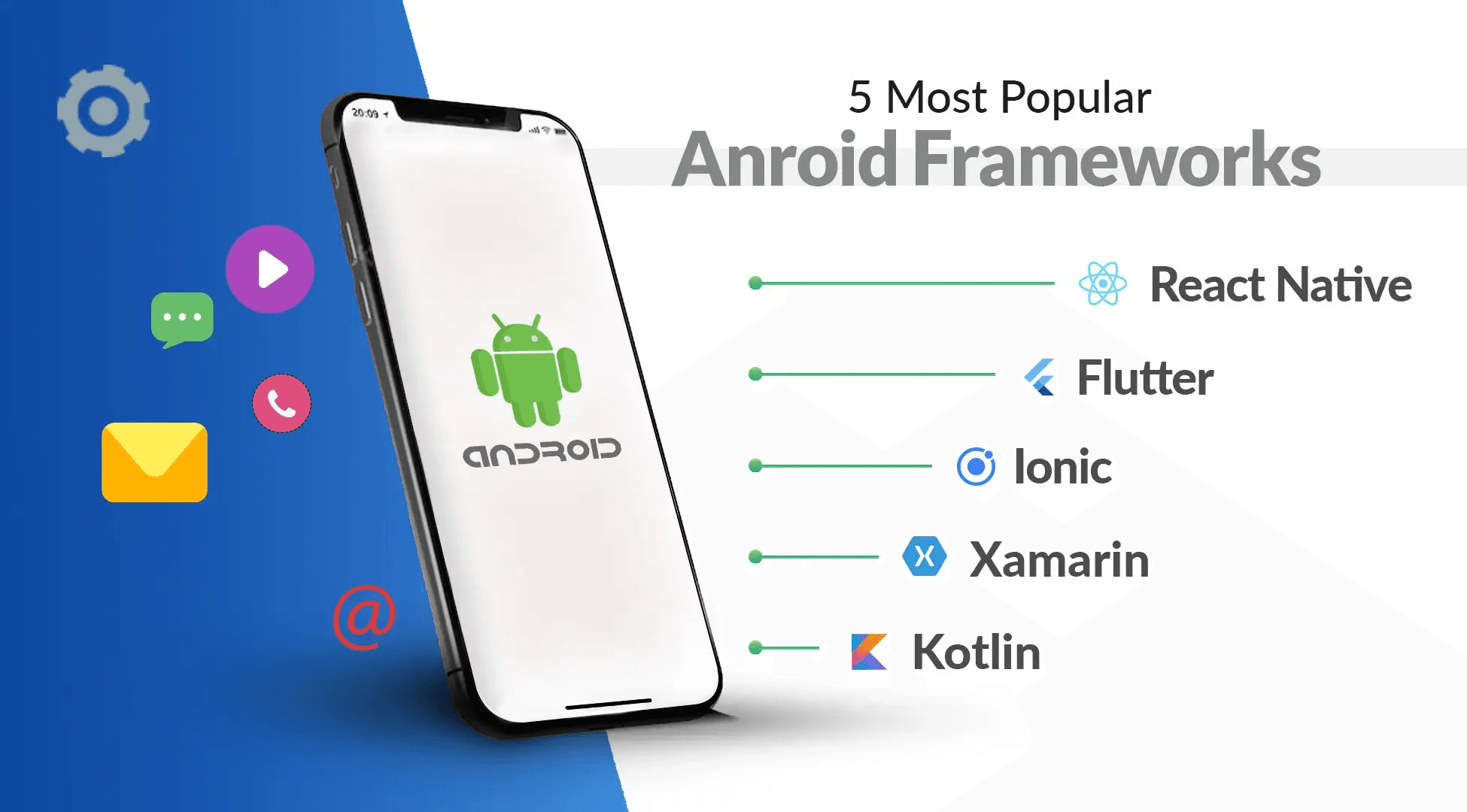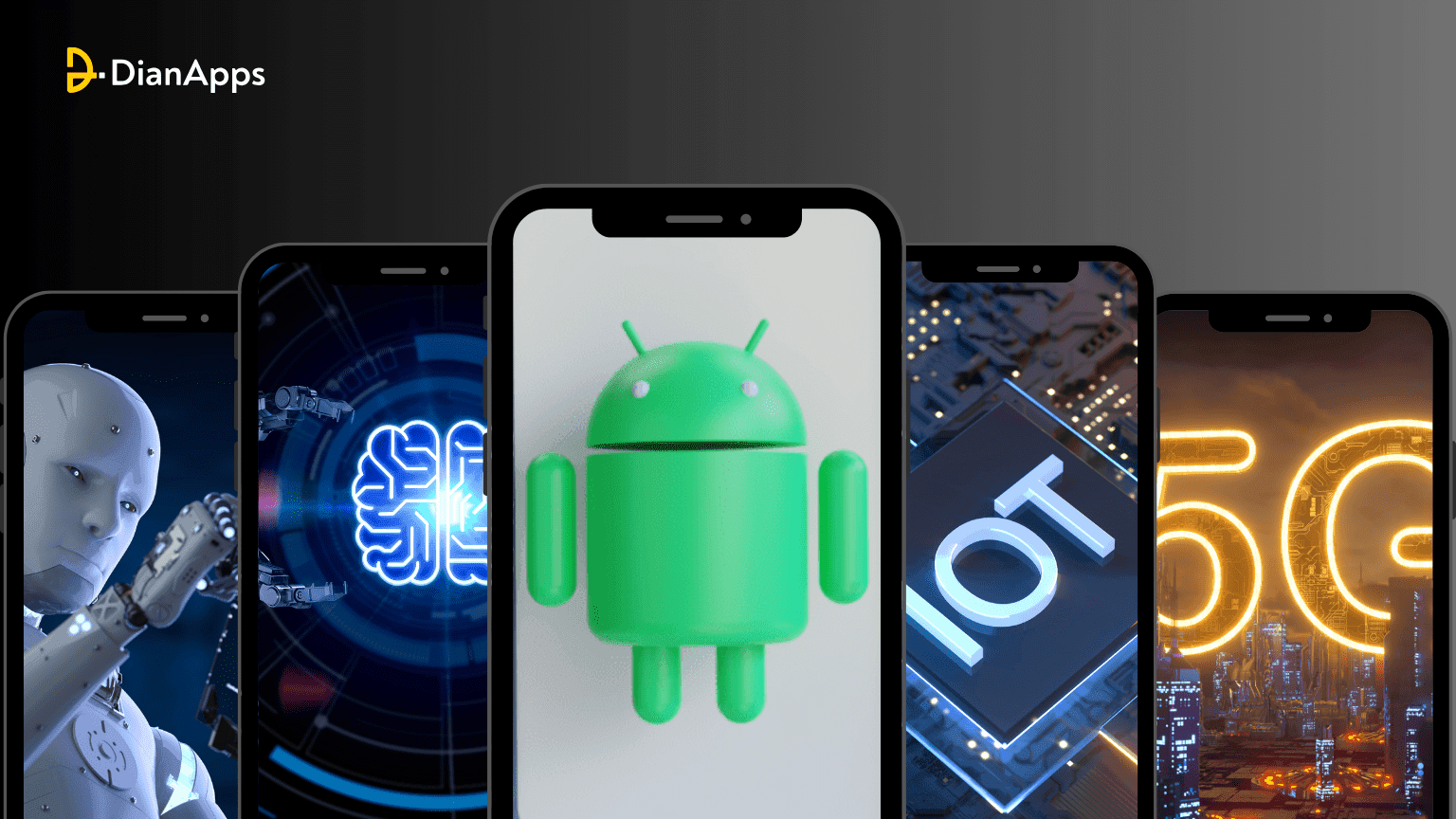Android App development has always been trending in the market as there are more than 3.9 billion people in the world, but in 2025 Android applications will bring something exciting to the market.
According to Stats given by Statista says that by 2027, the number of Android users will reach 5.85 billion. The upcoming Android app trends will change the way you use your mobile devices whether you are a consumer or a business owner.
Here, you can learn about the upcoming Android Application trends in 2025. Before going into this blog, if you want to hire the leading Android app development company in 2025, you can deal with the experts at DianApps.
Android apps are planning to transform the digital landscape with emerging trends like 5G-powered apps or IoT Integration. Read further to learn about the latest trends that are essential for redefining app development and usage.
What is an Android App Development?
The process of developing applications for Android devices is known as Android app development. Android developers use languages like Java and Kotlin and tools like Android Studio. This process involves everything from coding, testing, and development to launching an application on the right platform.
As the demand for Android platforms continues to grow, developers can use its open-source nature to build a scalable and customizable app. Android development, always remains at the forefront be it in improving the user experience or integrating new technologies like IoT and AI.
Top 5 Frameworks for Android Mobile App Development

There are multiple frameworks for developing mobile applications, but some of the best Android app development frameworks are listed below:
React Native
React Native is considered a go-to platform for developers due to its ability to create scalable cross-platform applications. In the cross-platform framework, both Android and IOS app works with a single codebase. It also has a hot reloading feature that allows developers to see changes immediately.
Kotlin Multiplatform
Kotlin is considered the best framework in the Android app market and has gained a competitive edge. Today, more than 80% of Android apps are developed using this framework. Kotlin is a preferred choice for people due to its safety users, it works well with Java, and it provides great support to customers.
Xamarin
Xamarin framework can help you to build an application for iOS, Android, and Windows. It refers to the sturdy foundation of .NET providing it a unique mobile app development technologies. Through this framework, developers can build an application in less time and it also provides easy maintenance facilities. Xamarin is the best platform if you want to provide the best user experience.
Ionic
Ionic is another popular framework for mobile app development, that can become a go-to platform for building cross-platform applications. This framework can be advantageous for web techs like CSS, JavaScript, and HTML. It can help you to build a cross-platform application in a single codebase that helps you save time and effort.
Flutter
Flutter kept on gaining popularity in the app development market. One of the best frameworks for developing cross-platform applications, top mobile app development companies in the USA, and Australia are using this framework for building a scalable application. Both Android and iOS applications can work well with a single codebase in Dart (Flutter’s language).
Now, if you are hiring any of these developers, ensure to get an answer of some questions.
Upcoming Android App Development Trends in 2025
Read more to know, about the trends in the Android app development market in the upcoming year.
Implementation of Machine Learning and Artificial Intelligence
The impact of AI and ML is expected to increase in 2025. With the rise in its popularity, it will start integrating into applications to provide personalized experiences to customers, improve the decision-making process, and automate tasks. AI can also provide custom support using chatbots and predictive analytics systems.
With the help of AI and ML apps can also understand the customer’s interests and can anticipate your actions. Based on your schedule, mood, and it shows you recommendations for songs. If you go to search for clothing it shows your products on your previous searches.
5G-Powered Apps
Remember the time when 4G came into existence, people were very excited about its high speed? Now, that 5G has come into existence it will provide you an advanced features with better speed and connectivity in 2025. Mobile app developers are going to take complete advantage of this high-speed network.
You must have a question, how is it beneficial for applications? Imagine searching for any products without any waiting time or watching a movie with no network interruptions isn’t it amazing? 5G will help apps to process a large amount of data and provide seamless opportunities and experiences to customers.
With these upcoming trends, applications can also play an important role in the healthcare, education, medical, and city infrastructure industries. You can get a complete on-demand app development guide to build an application.
Cross-Platform App Development
In the earlier days, mobile developers have to write different code for Android, iOS, and Windows applications. This was a time-consuming process. But with an increase in the demands of mobile applications the need for technological advancement has also increased. Cross-platform frameworks like React Native and Flutter have gained a completive edge, that enables developers to write a single code for all types of applications.
Cross-platform app reduces the time and cost of development with no compromise on the quality of the application. With this developers can create an application with high user experience and performance.
Enhanced Focus on Security and Privacy
Consequently, data security and privacy concerns are on the rise, and mobile applications need to ensure that users are secure. By 2025, regulatory frameworks such as GDPR and CCPA will affect how applications are designed, requiring developers to adopt more robust data management practices, along with consistent end-to-end encryption and biometric authentication, ensuring clear privacy rules. Due to an increase in cyber crimes, people want high-level security and developers ensure to provide a secure application to gain customer’s trust and loyalty.
Integration of the Internet of Things (IoT)
In the earlier days, smartphones were only considered a source of communication and entertainment. But with an advancement in technology, it has now become a remote to our lives. Today, almost every product we use, from cars to watches, is connected to the internet.
Today, all these apps are connected to your mobile phone; you can now power off your AC with an app or preheat your oven. You can also take medical and educational-related pieces of advice from the experts by just sitting in one place.
Now, these innovations have made the work of developers even more complex. Today they have to develop an application that connects with wearables or any other electronic appliances.
Blockchain-Based Apps
Virtual currency is no longer the only application of blockchain technology. In 2025, Blockchain technology will be used by app development companies to increase security and transparency.
Blockchain technology has the effect to change the way, how we handle personal information on our phones. It could be used by banking apps to increase transaction security and traceability. Health apps might use it to store medical records in a way that makes them easily accessible to healthcare practitioners while maintaining privacy.
Low-Code and No-Code Development
As the demand for mobile apps is expanding day by day, people are expecting to see low-code or no-code platforms that run smoothly. This innovation will help non-tech or tech people with little knowledge to develop a user-friendly application for their projects.
This trend is really helpful for small companies and startups to build innovative applications at a reasonable cost. It will allow us to build unique applications, but developers need not worry as large platforms will always require coding to build a scalable app.
Progressive Web Apps
PWAs or progressive web applications are online frameworks that work like native mobile apps. They provide customers with a fast, reliable, and fun connection without having to download a traditional app from the App Store. This is done by blending the best features of both online and mobile experiences.
Caching and other capabilities enable PWAs to work offline or on slower networks, which is one of their main advantages. As a result, individuals with spotty internet connections can get it. PWAs are smaller and lighter than conventional apps, and use less space on your device.
Additionally, PWAs can be placed on the home screen like native apps, but can also be accessed directly through a web browser. It provides a smooth user experience to the customers without the need for installation or upgrades.
PWAs are gaining popularity in the market due to their inexpensive nature. These apps are easy to build and manage and are also considered the best way for companies to expand their customer base. Based on the predictions it is expected that in 2025 people will likely use PWAs to expand customer engagement and enhance user experience.
Final Words
The future of mobile applications seems very powerful and growing in the upcoming years. Upcoming trends in 2025 like AI and ML, AR/VR, and enhanced connectivity will help developers redefine the process of app development.
Adopting the latest trends in the market will help development companies to build an innovative application or it will also enhance the experience of the users. The way people are using mobile devices will have a significant impact on the adoption of the latest technologies mobile app development services.
If you are planning to build a new mobile application or your application is one the process of development make sure to integrate these trends into your application to get a valuable result.










Leave a Comment
Your email address will not be published. Required fields are marked *